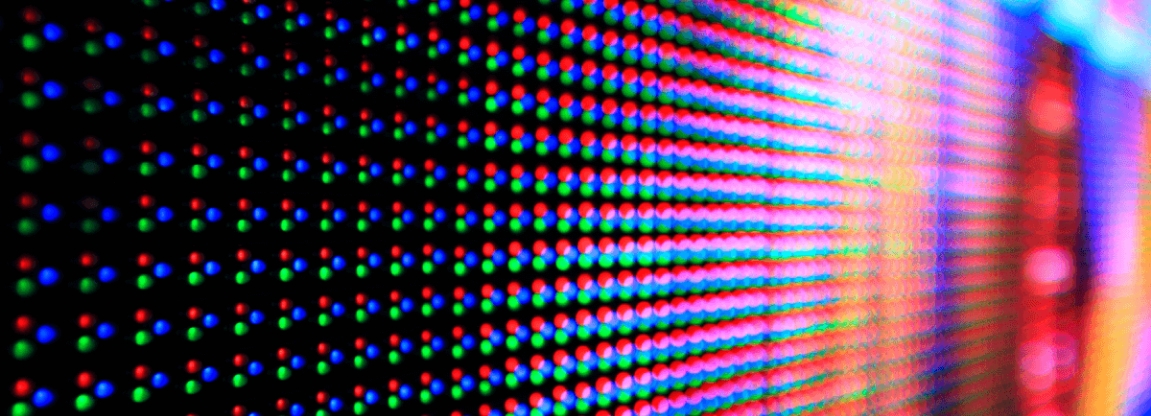LCD vs LED
LCD VS LED
LCD VS Led
Navigating the Display Market: A Comprehensive Guide to LCD and LED Technologies


Selecting the right display for your computer or television is often a challenging task, primarily due to the plethora of options available in the market today. Among these numerous choices, LCD (Liquid Crystal Display) and LED (Light Emitting Diodes) stand out as two of the most prevalent display technologies. Both of them have carved out substantial niches in both the consumer and professional markets, making them the go-to choices for a range of applications—from everyday computing and home entertainment to specialised professional use.
Given their widespread adoption, it becomes imperative to understand the fundamental differences between LCD and LED displays. These differences span across various aspects such as underlying technology, image quality, power consumption, and longevity, among others. With this in mind, this blog seeks to provide a comprehensive guide to these two types of displays, dissecting their pros and cons to aid you in making an educated decision tailored to your specific needs and preferences. By the end of this read, you should be well-equipped to navigate the display market and pick the option that best suits your requirements.
Technology Basics


LCD (Liquid Crystal Display)
Liquid Crystal Displays, commonly known as LCDs, are constructed using a complex arrangement of multiple layers. These layers include a backlit panel, polarising filters, and a liquid crystal solution sandwiched in between these filters. The backlight, traditionally fluorescent in nature, serves as the external light source that illuminates the entire display.
When an electric charge is applied to these liquid crystals, they undergo a realignment. This realignment allows them to either block or permit light to pass through them. Essentially, the liquid crystals act as shutters, controlling the amount and direction of light emitted from the backlight. By doing so, they facilitate the formation of images on the screen.
The interaction between the electric charge and the liquid crystals is carefully calibrated and controlled. It is this precise control that enables the LCD to display a wide range of colours and images with varying degrees of brightness and contrast. This complex orchestration of components and electrical signals is what allows LCDs to produce the crisp, clear images that have made them a popular choice for everything from computer monitors to large-screen televisions.
LED (Light Emitting Diodes)
LED displays are a specialised variant of LCD screens, sharing many of the same foundational technologies, such as liquid crystals and polarising filters. What sets LED displays apart is their use of Light Emitting Diodes (LEDs) for backlighting, as opposed to the traditional fluorescent lights used in standard LCDs. This substitution of LEDs for fluorescent lights introduces a number of advantages in terms of display quality and design flexibility.
One of the most notable benefits is the placement of the LEDs themselves. In LED displays, these diodes can be positioned either directly behind the screen—known as full-array—or along the edges of the display, which is commonly referred to as edge-lit. This versatility in placement options allows for slimmer and more lightweight screen designs, making it easier to create sleek, modern displays that are ideal for both wall mounting and desktop setups.
Furthermore, the use of LEDs offers enhanced control over lighting levels across the screen. Depending on the configuration, some LED displays enable local dimming, which means individual LED zones can be dimmed or brightened independently. This leads to more precise control over brightness and contrast, resulting in improved image quality with deeper blacks and more vibrant colours.
In summary, LED displays are an evolution of LCD technology, retaining the core principles while introducing improvements in backlighting, form factor, and image quality. This combination of features often makes LED displays a more appealing choice for consumers seeking high-performance screens.
Image Quality


Colour Accuracy
LCD displays are generally known for their good colour accuracy, making them a solid choice for tasks that require true-to-life colour representation, such as graphic design or photo editing. However, one of the limitations of traditional LCDs is their restricted viewing angles. This means that the colour and brightness of the screen can appear distorted when viewed from angles that deviate significantly from head-on. For single-user scenarios or setups where viewers are typically situated directly in front of the screen, this may not be a major concern. But in multi-viewer environments or more flexible viewing arrangements, this limitation can be a drawback.
In contrast, LED displays, which are a subset of LCD technology but with LED backlighting, generally offer improved colour reproduction and wider viewing angles. The high-quality backlighting in LED displays allows for a more uniform light distribution across the screen, which in turn contributes to better colour consistency. The LED technology also often allows for local dimming, which can improve contrast ratios and produce deeper blacks, enhancing overall image quality.
Moreover, the broader viewing angles in LED displays make them a more versatile option for environments where the screen may be viewed from various angles, such as in a living room or an open office layout. This quality is particularly beneficial for collaborative work settings or for any situation where multiple viewers need to see the screen clearly, regardless of their position in relation to the display.
In summary, while both LCD and LED displays have their merits, the latter generally provides superior colour reproduction and viewing angles due to advancements in backlighting technology.
Brightness and Contrast
LED displays have an edge in brightness and contrast due to their ability to control individual LEDs. This feature, known as local dimming, enables certain areas of the screen to be dimmed or brightened independently of others. As a result, blacks appear deeper and whites are brighter, leading to a more dynamic range of contrast. This heightened contrast ratio enhances overall image quality, making colours appear more vibrant and details more sharp. Local dimming is particularly effective in scenes with high contrast, such as those featuring both bright sunlight and dark shadows, offering a more realistic and visually pleasing viewing experience.
Power Consumption
LED displays are generally more energy-efficient than their traditional LCD counterparts, primarily due to the lower power requirements of LED backlighting. LEDs are intrinsically more efficient light sources, converting a greater percentage of electrical energy into light and producing less heat in the process. Because of this efficiency, less power is needed to achieve the same level of brightness as an LCD screen with fluorescent backlighting.
The reduced power consumption of LED displays not only makes them an eco-friendly choice but can also lead to financial benefits over time. Lower energy usage translates to a decrease in electricity costs, providing long-term savings on your utility bill. This efficiency makes LED displays a cost-effective option for both individual consumers and businesses looking to reduce operational expenses. Moreover, the lower heat output of LED displays also means less wear and tear on internal components, potentially extending the lifespan of the device and offering additional cost savings in the long run.
Lifespan and Durability
LED displays typically outlast LCDs in terms of lifespan, due to the inherent durability and efficiency of Light Emitting Diodes. Unlike fluorescent backlights used in traditional LCDs, LEDs are less prone to degrade over time, maintaining their brightness and performance for longer periods. This durability makes LED displays a more sustainable and cost-effective choice for long-term use.
Another advantage of LED technology is its resistance to common display issues like screen burn-in. Burn-in occurs when static images or text are displayed for extended periods, leading to permanent discolouration of the screen. LEDs are generally less susceptible to this problem, partly due to the ability to control individual diodes, which can be dimmed or turned off entirely to reduce the risk of burn-in.
Given these attributes, LED displays are often considered a more reliable long-term investment. Their extended lifespan and resistance to common screen issues like burn-in mean fewer worries about replacement or repair, contributing to their overall value proposition.
Price
LED displays often come with a higher initial price tag compared to traditional LCDs, which might make them appear less economical at first glance. However, when taking into account factors like energy efficiency and longevity, the overall cost equation tends to favor LEDs over the long term.
LEDs consume less electricity due to their more efficient light-emitting technology, leading to lower energy bills over time. This reduction in power usage can be significant enough to offset the initial cost premium, especially if the display is in frequent use.
Additionally, the longer lifespan of LED displays adds another layer of long-term value. With fewer concerns about degradation and potential repair or replacement costs, the investment in an LED display often proves to be more financially sound over its lifetime. The device's durability and resistance to issues like screen burn-in further strengthen its cost-effectiveness.
So, while the upfront cost of an LED display may be higher, the long-term savings in energy and potential for a longer-lasting device can make it a more cost-effective choice in the end.
LCD vs LED Displays: Making an Informed Choice Based on Your Needs, Budget, and Use Case
Both LCD and LED displays offer distinct advantages and disadvantages, and your choice between the two will depend on a variety of factors including your specific needs, budget, and intended use.
If energy efficiency ranks high on your list of priorities, LED displays are the more suitable option. They consume less power than traditional LCDs, which can result in lower electricity bills over time. LEDs also have the advantage of offering better contrast ratios due to their ability to control individual light diodes. This makes for deeper blacks, brighter whites, and overall better image quality. Moreover, LEDs are generally more durable and have a longer lifespan, making them a more reliable choice for long-term use.
On the other hand, if budget is a primary concern and your display needs are fairly basic, a traditional LCD might be sufficient. LCDs are usually cheaper upfront, making them accessible for those who are cost-conscious. They are generally adequate for simple tasks like browsing the web, word processing, and watching standard-definition videos. While they may not offer the energy efficiency or high contrast of LEDs, they can still be a viable choice for basic use.
Understanding the fundamental differences between LCD and LED technology, such as power consumption, contrast, and durability, will equip you with the knowledge needed to make a more informed purchasing decision. By aligning these factors with your specific needs and budget, you can select the display technology that provides the best value and performance for your situation.

